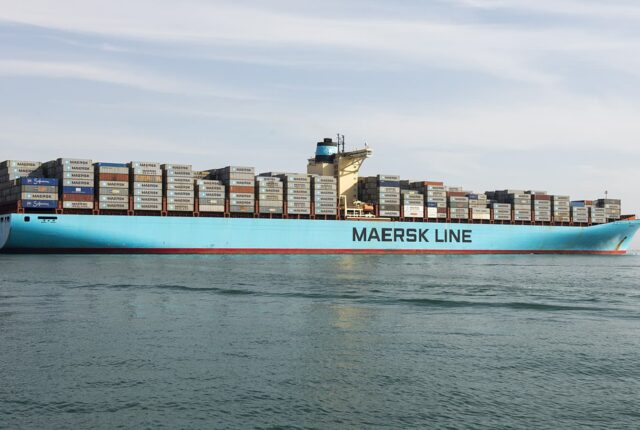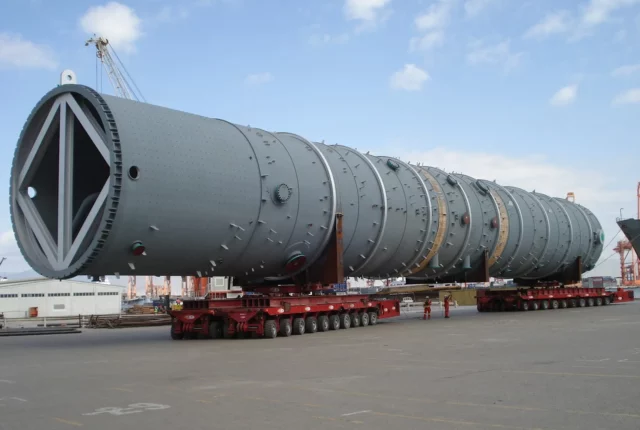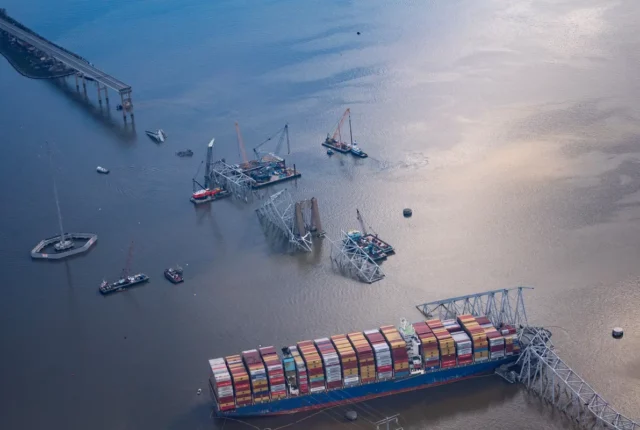
The Big Splash: Impact of Mega Container Ships on Sea Freight
In the vast expanse of sea freight, a colossal wave has emerged – Mega Container Ships. These titans of the ocean are transforming the dynamics of global trade and logistics. Let’s delve into the profound impact they are making on the seas and the industries they navigate.
Evolution of Mega Container Ships
Historical Context
The roots of Mega Container Ships trace back to the mid-20th century when containerization revolutionized cargo transport. The need for larger vessels grew with the increasing demand for global trade.
Technological Advancements
Modern Mega Container Ships are a marvel of engineering, equipped with cutting-edge technologies that enhance efficiency, speed, and capacity. From advanced navigation systems to automated cargo handling, innovation propels their evolution.
The Big Players in Mega Container Shipping
In the vast oceanic playground, major shipping companies are engaged in a race to build the largest fleets. Their strategies and the trends in fleet expansion shape the landscape of sea freight.
Major Shipping Companies
Names like Maersk, MSC, and COSCO dominate the scene, with fleets that span continents. Their investments in Mega Container Ships reflect a commitment to staying ahead in the competitive maritime industry.
Fleet Expansion Trends
Analyzing the trends in fleet expansion reveals a fascinating pattern. Companies are not merely increasing the number of vessels but also focusing on size and technological capabilities, driving the era of mega-ships.
Environmental Concerns
As Mega Container Ships traverse the oceans, concerns about their environmental impact have surfaced. The colossal fuel consumption and emissions raise questions about sustainability, prompting the industry to explore greener alternatives.
Fuel Consumption and Emissions
The sheer size of Mega Container Ships demands substantial fuel consumption, contributing to carbon emissions. Efforts to address this include exploring cleaner fuels and adopting energy-efficient technologies.
Efforts Towards Sustainability
Acknowledging the environmental challenges, the industry is actively exploring sustainable practices. From implementing slow steaming to investing in research for eco-friendly propulsion, steps are being taken to mitigate the ecological footprint.
Impact on Global Trade
The ripple effect of Mega Container Ships on global trade is profound, bringing both benefits and challenges to the table.
Efficiency Gains
The ability to transport colossal amounts of cargo in a single voyage enhances efficiency, reducing transit times and costs. Mega Container Ships are reshaping supply chains, enabling businesses to operate on a grander scale.
Challenges Faced by Small Ports
While major ports benefit from the efficiency of Mega Container Ships, smaller ports face challenges in adapting to their scale. Infrastructure limitations and handling capacities become apparent, necessitating upgrades for comprehensive integration.
Infrastructure Changes
The surge in Mega Container Ships necessitates significant changes in port infrastructure to accommodate their size and capitalize on technological advancements.
Upgrading Ports
Ports worldwide are undergoing transformations to accommodate Mega Container Ships, involving dredging, expanding berths, and implementing state-of-the-art cargo handling systems.
Handling Capacity and Technology Integration
Beyond physical changes, the integration of advanced technologies is crucial. From smart container tracking to automated loading and unloading systems, the infrastructure must align with the technological prowess of Mega Container Ships.
Economic Implications
The economic implications of Mega Container Ships are multifaceted, influencing businesses, job markets, and overall economic growth.
Cost Savings for Businesses
For businesses engaged in global trade, the cost savings facilitated by Mega Container Ships are substantial. Economies of scale translate into more affordable shipping rates, enabling businesses to thrive in the international market.
Job Market and Economic Growth
The ripple effect extends to job creation and economic growth. The demand for skilled labor in maritime industries and related sectors sees an upswing, contributing to the economic prosperity of regions with active ports.
Technological Innovations in Mega Container Ships
The technology onboard Mega Container Ships extends beyond propulsion systems, venturing into the realm of digitalization and autonomy.
Autonomous Shipping
The concept of autonomous shipping is no longer confined to science fiction. Mega Container Ships are incorporating autonomous navigation systems, paving the way for a future where human intervention may be minimized.
Digitalization in Logistics
Digitalization permeates every aspect of Mega Container Ships’ operations, from real-time tracking systems to blockchain-enabled supply chain management. The integration of digital technologies enhances transparency and efficiency.
Challenges and Criticisms
As Mega Container Ships redefine the seascape, challenges and criticisms emerge, ranging from security concerns to geopolitical implications.
Security Concerns
The sheer scale of Mega Container Ships raises security concerns. Protecting these floating giants from piracy and other threats requires innovative security measures and international cooperation.
Geopolitical Implications
The concentration of Mega Container Ship ownership among a few major players introduces geopolitical considerations. The influence these vessels wield in global trade routes can shape geopolitical dynamics and trade alliances.
Future Outlook
What does the future hold for Mega Container Ships? Examining trends in ship design and anticipating regulatory changes provides a glimpse into the next chapter of maritime evolution.
Trends in Ship Design
The ongoing trend suggests a continuous pursuit of larger, more efficient vessels. Innovations in propulsion, materials, and design contribute to the evolution of Mega Container Ships.
Regulatory Changes
Anticipating regulatory changes is pivotal in understanding the trajectory of Mega Container Ships. Environmental regulations, safety standards, and international cooperation will shape the industry’s future.
Conclusion
In the vastness of the ocean, Mega Container Ships make a big splash, reshaping the sea freight industry. Their impact, though significant, comes with challenges and responsibilities. As the maritime industry sails into the future, balancing efficiency with sustainability will be the key to navigating the waves of change.
FAQs
Are Mega Container Ships more environmentally friendly than smaller vessels?
Mega Container Ships, while efficient in terms of cargo volume, still face challenges in reducing their environmental impact. Advances in sustainable practices are underway.
How do Mega Container Ships contribute to cost savings for businesses?
Economies of scale allow Mega Container Ships to transport large volumes at lower per-unit costs, translating into cost savings for businesses engaged in international trade.
What are the major challenges faced by smaller ports in adapting to Mega Container Ships?
Smaller ports often struggle with infrastructure limitations and handling capacities when accommodating Mega Container Ships, necessitating upgrades.






